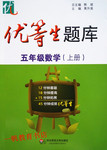题目内容
请根据下文的提示,写一篇介绍“中国结”的说明文。
称谓 | 中国结,一种独具特色的中国民间手工艺装饰品 |
历史 | 起源于远古时期,唐宋时期得以发展,明清时代就像今天这样盛兴 |
现状 | 品种繁多,由红色丝线、布匹和其它原料做成 因其形状、用途和起源的不同而命名 作为礼物送给朋友或悬挂在自己的房屋内 |
意义 | 代表和平、友谊、爱情、好运等 |
参考词汇:中国结 Chinese knot 手工艺品 handicraft art 丝线 silk thread
【写作内容】 请根据以上表格中的信息用英语写一篇短文介绍中国结。
【写作要求】 用100词左右表达全部内容。
【评分标准】 句子结构准确,信息内容完整,篇章结构连贯。
The Chinese knot is a kind of characteristic folk decorations of handicraft art. Dating back to the ancient time, it developed in the Tang and Song Dynasties and was as popular in the Ming and Qing Dynasties as today. Nowadays, there are all kinds of Chinese knots, which can be made of red silk threads, cloth and other materials, and are named according to their different shapes, usages and origins. People can either give them as gifts to friends or hang them in their houses. In China, these knots stand for peace, friendship, love, good luck and so on.
【解析】
试题分析:要求写说明文,注意条理要清晰,逻辑顺序和结构要恰当,同时要尽量保持简洁精干的内容,不拖泥带水。要注意题中所给的信息,不可偏题也不要遗漏,注意格式。尽量保持卷面整洁,字体美观,注意行文的连贯性。
【亮点分析】
第一句介绍中国结的称谓The Chinese knot is a kind of characteristic folk decorations of handicraft art. 第二句介绍历史,用了分词做状语的结构Dating back to the ancient time, it developed in the Tang and Song Dynasties and was as popular in the Ming and Qing Dynasties as today.(中国结的历史)追溯到远古时期,它发源于唐宋时期,在明清时期变得和现在一样流行。第三句是一个which引导的非限制性定语从句,描写现在的中国结的发展情况Nowadays, there are all kinds of Chinese knots, which can be made of red silk threads, cloth and other materials, and are named according to their different shapes, usages and origins.现如今,有不同样式的用红丝线、布和其他材料的做成的中国结,这些中国结都根据他们不同的形状、作用和起源来命名。最后两句写中国结的意义People can either give them as gifts to friends or hang them in their houses. 人们可以把它们送给朋友,也可以把它们挂在屋子里。In China, these knots stand for peace, friendship, love, good luck and so on.在中国,这些中国结象征着和平、友谊、爱情、好运等等。
考点:考查说明文写作

 优等生题库系列答案
优等生题库系列答案